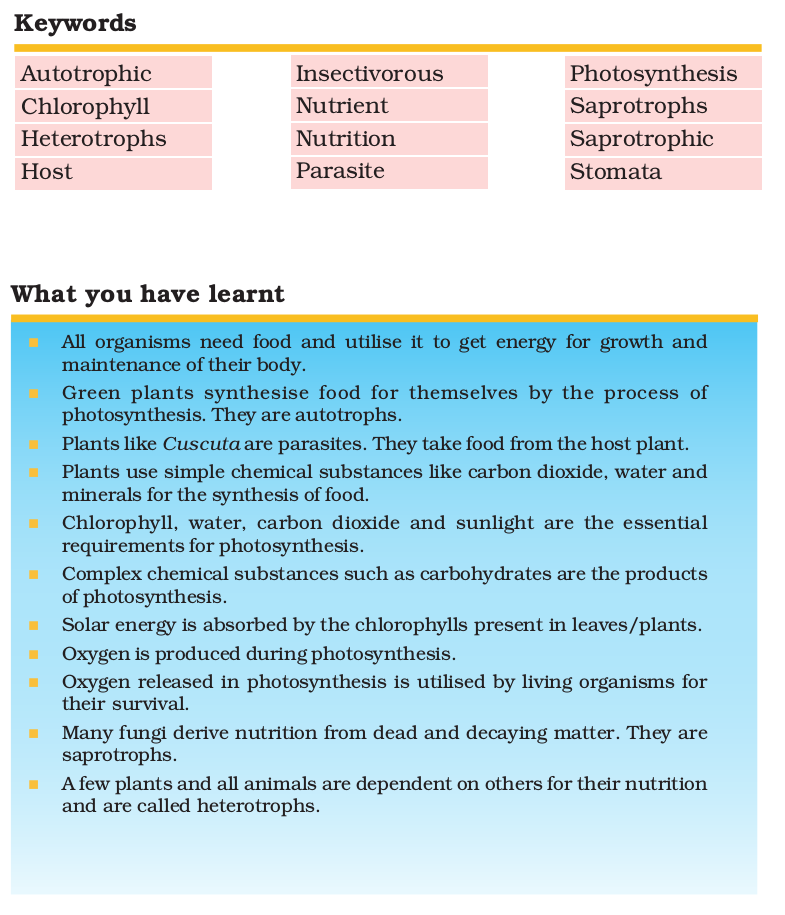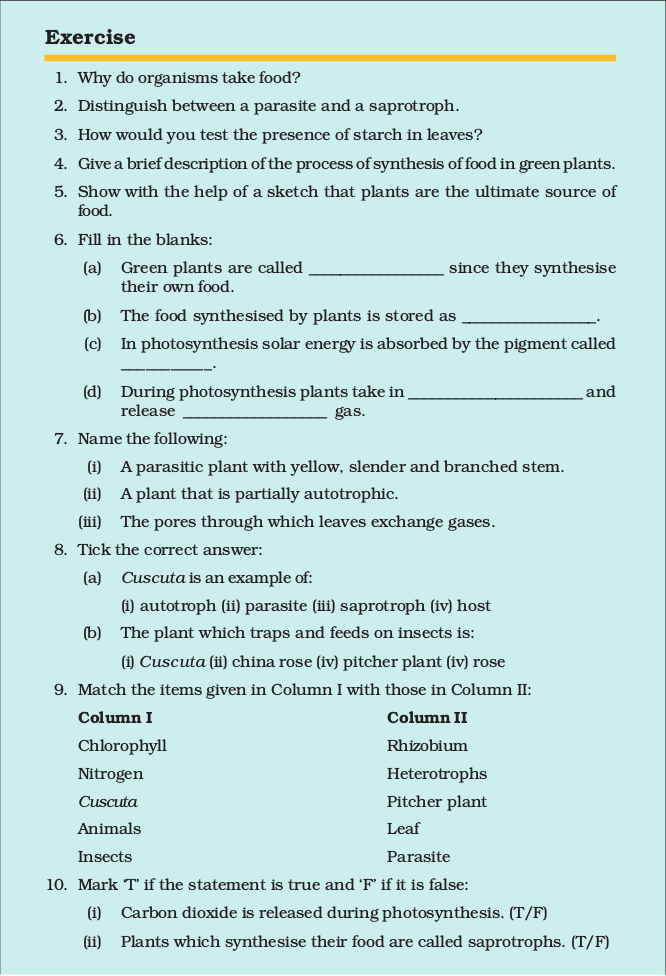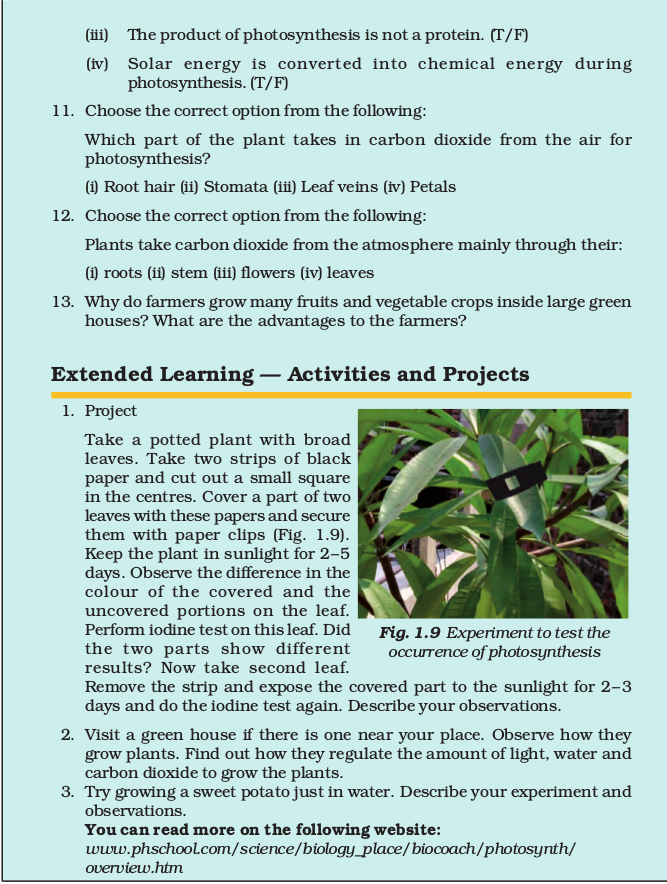Table of Contents

1. Nutrition in Plants

In Class VI you learnt that food is essential for all living organisms. You also learnt that carbohydrates, proteins, fats, vitamins and minerals are components of food. These components of food are called nutrients and are necessary for our body.
All living organisms require food. Plants can synthesise food for themselves but animals including humans cannot. They get it from plants or animals that eat plants. Thus, humans and animals are directly or indirectly dependent on plants.
1.1 Mode of nutrition in plants

Plants are the only organisms that can prepare food for themselves by using water, carbon dioxide and minerals. The raw materials are present in their surroundings.
The nutrients enable living organisms to build their bodies, to grow, to repair damaged parts of their bodies and provide the energy to carry out life processes. Nutrition is the mode of taking food by an organism and its utilisation by the body. The mode of nutrition in which organisms make food themselves from simple substances is called autotrophic (auto = self; trophos = nourishment) nutrition. Therefore, plants are called autotrophs. Animals and most other organisms take in food prepared by plants. They are called heterotrophs (heteros = other).
Now we may ask where the food factories of plants are located: whether food is made in all parts of a plant or only in certain parts? How do plants obtain the raw materials from the surroundings? How do they transport them to the food factories of plants?
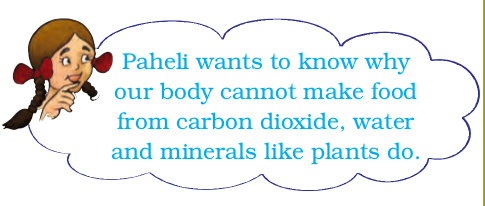
1.2 Photosynthesis — food making process in plants
Leaves are the food factories of plants. Therefore, all the raw materials must reach the leaf. Water and minerals present in the soil are absorbed by the roots and transported to the leaves. Carbon dioxide from air is taken in through the tiny pores present on the surface of leaves. These pores are surrounded by ‘guard cells’. Such pores are called stomata [Fig. 1.2 (c)].
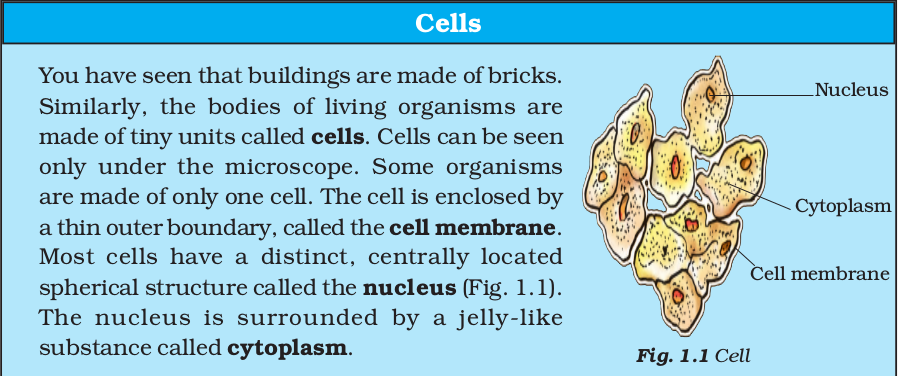
Water and minerals are transported to the leaves by the vessels which run like pipes throughout the root, the stem, the branches and the leaves. They form a continuous path or passage for the nutrients to reach the leaf. They are called vessels. You will learn more about transport of materials in plants in Chapter 11.

The leaves have a green pigment called chlorophyll. It helps leaves to capture the energy of the sunlight. This energy is used to synthesise (prepare) food from carbon dioxide and water. Since the synthesis of food occurs in the presence of sunlight, it is called photosynthesis (Photo: light; synthesis : to combine). So we find that chlorophyll, sunlight, carbon dioxide and water are necessary to carry out the process of photosynthesis. It is a unique process on the earth. The solar energy is captured by the leaves and stored in the plant in the form of food. Thus, sun is the ultimate source of energy for all living organisms.
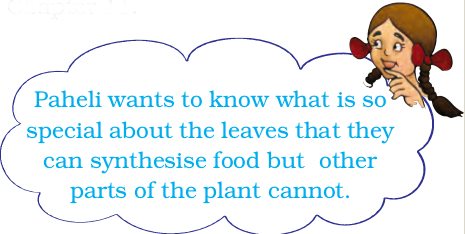
Paheli wants to know what is so special about the leaves that they can synthesise food but other parts of the plant cannot.
Can you imagine life on earth in the absence of photosynthesis!
In the absence of photosynthesis there would not be any food. The survival of almost all living organisms directly or indirectly depends upon the food made by the plants. Besides, oxygen which is essential for the survival of all organisms is produced during photosynthesis. In the absence of photosynthesis, life would be impossible on the earth.
Besides leaves, photosynthesis also takes place in other green parts of the plant — in green stems and green branches. The desert plants have scale- or spine-like leaves to reduce loss of water by transpiration. These plants have green stems which carry out photosynthesis.
During photosynthesis, chlorophyll containing cells of leaves (Fig. 1.2), in the presence of sunlight, use carbon dioxide and water to synthesise carbohydrates (Fig. 1.3). The process can be represented in an equation:
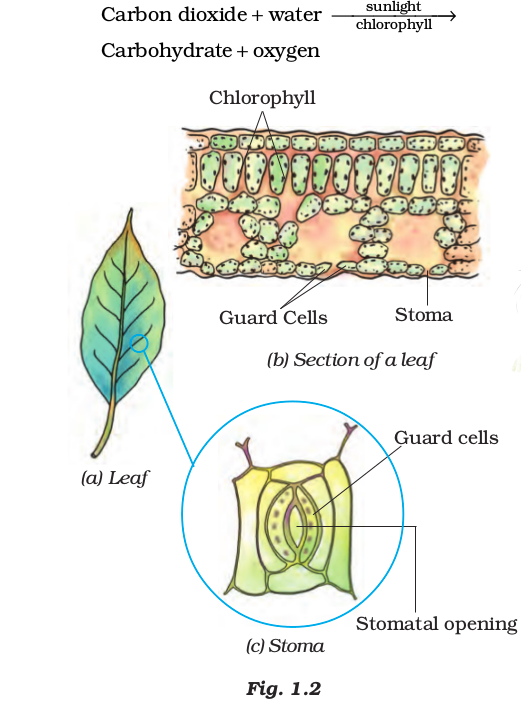
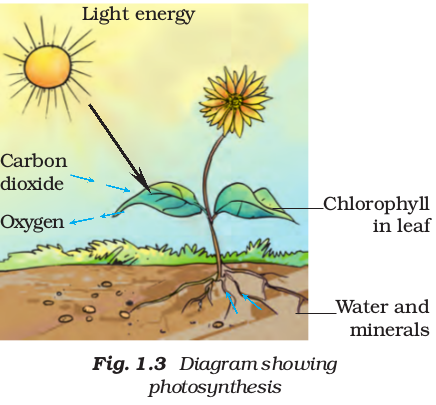
During the process oxygen is released. The presence of starch in leaves indicates the occurrence of photosynthesis. Starch is also a carbohydrate.
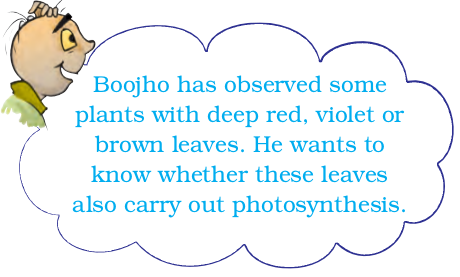
Activity 1.1
Take two potted plants of the same kind. Keep one in the dark (or in a black box) for 72 hours and the other in sunlight. Perform iodine test with the leaves of both the plants as you did in Class VI. Record your results. Now leave the pot which was earlier kept in the dark, in the sunlight for 3 – 4 days and perform the iodine test again on its leaves. Record your observations in your notebook.
The leaves other than green also have chlorophyll. The large amount of red, brown and other pigments mask the green colour (Fig. 1.4). Photosynthesis takes place in these leaves also.
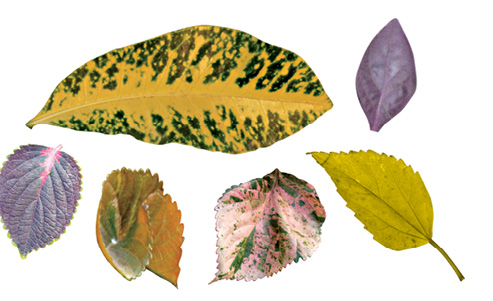
Fig. 1.4 Leaves of various colours
You often see slimy, green patches in ponds or stagnant water bodies. These are generally formed by the growth of organisms called algae. Can you guess why algae are green in colour? They contain chlorophyll which gives them the green colour. Algae can also prepare their own food by photosynthesis.
Synthesis of plant food other than carbohydrates
You have just learnt that plants synthesise carbohydrates through the process of photosynthesis. The carbohydrates are made of carbon, hydrogen and oxygen. These are used to synthesise other components of food such as proteins and fats. But proteins are nitrogenous substances which contain nitrogen. From where do the plants obtain nitrogen?
1.3 Other Modes of Nutrition in plants
There are some plants which do not have chlorophyll. They cannot synthesise food. How do they survive and from where do they derive nutrition? Like humans and animals such plants depend on the food produced by other plants. They use the heterotrophic mode of nutrition. Look at Fig. 1.5. Do you see a yellow wiry branched structure twining around the stem and branches of a tree? This is a plant called Cuscuta (Amarbel). It does not have chlorophyll. It takes readymade food from the plant on which it is climbing. The plant on which it climbs is called the host. Since it deprives the host of valuable nutrients,
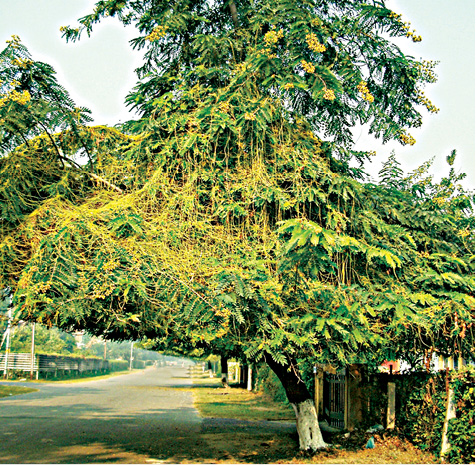
Fig. 1.5 Cuscuta (Amarbel) on host plant
Cuscuta is called the parasite. Are we and other animals also a kind of parasites? You should think about it and discuss with your teacher.
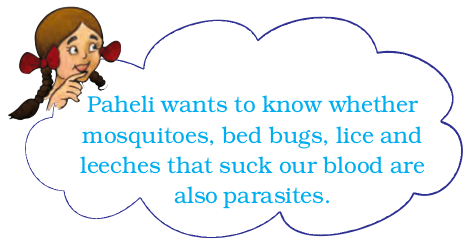
Have you seen or heard of plants that can eat animals? There are a few plants which can trap insects and digest them. Is it not amazing? Such plants may be green or of some other colour. Look at the plant in Fig. 1.6. The pitcher-like or jug-like structure is the modified part of leaf. The apex of the leaf forms a lid which can open and close the mouth of the pitcher. Inside the pitcher there are hair which are directed downwards. When an insect lands in the pitcher, the lid closes and the trapped insect gets entangled into the hair. The lid closes and the insect is trapped. The insect is digested by the digestive juices secreted in the pitcher and its nutrients are absorbed. Such insect-eating plants are called insectivorous plants.
Is it possible that such plants do not get all the required nutrients from the soil in which they grow?
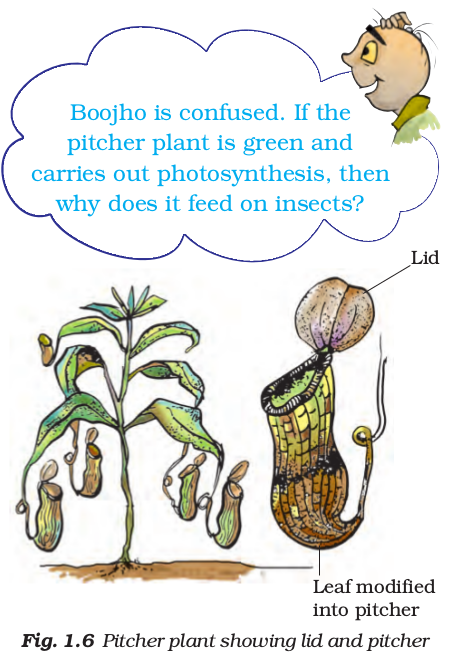
1.4 Saprotrophs
You might have seen packets of mushrooms sold in the vegetable market. You may have also seen fluffy umbrella-like patches growing in moist soils or on rotting wood during the rainy season (Fig. 1.7). Let us find out what type of nutrients they need to survive and from where they get them.
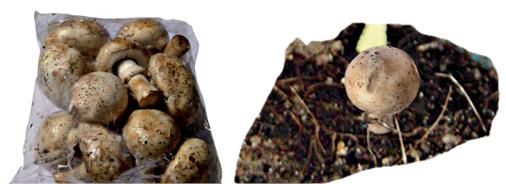
Fig. 1.7 Packet of mushrooms, a mushroom growing on decayed material

Activity 1.2
Paheli wants to know whether mosquitoes, bed bugs, lice and leeches that suck our blood are also parasites.
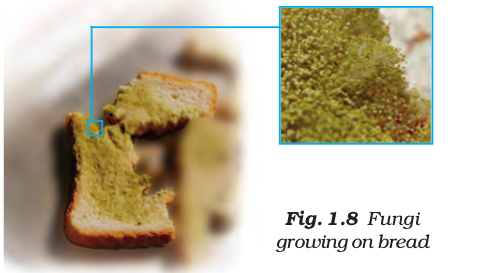
These organisms are called fungi. They have a different mode of nutrition. They absorb the nutrients from the bread. This mode of nutrition in which organisms take in nutrients from dead and decaying matter is called saprotrophic nutrition. Such organisms with saprotrophic mode of nutrition are called saprotrophs.
Fungi also grow on pickles, leather, clothes and other articles that are left in hot and humid weather for long time. During the rainy season they spoil many things. Ask your parents about the menace of fungi in your house.
The fungal spores are generally present in the air. When they land on wet and warm things they germinate and grow. Now, can you figure out how we can protect our things from getting spoiled?
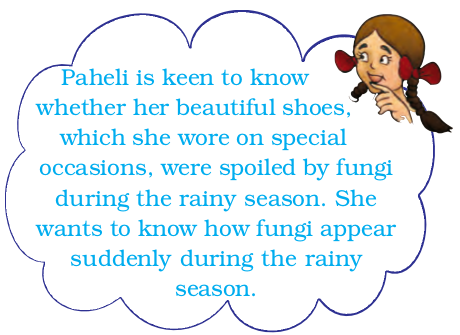
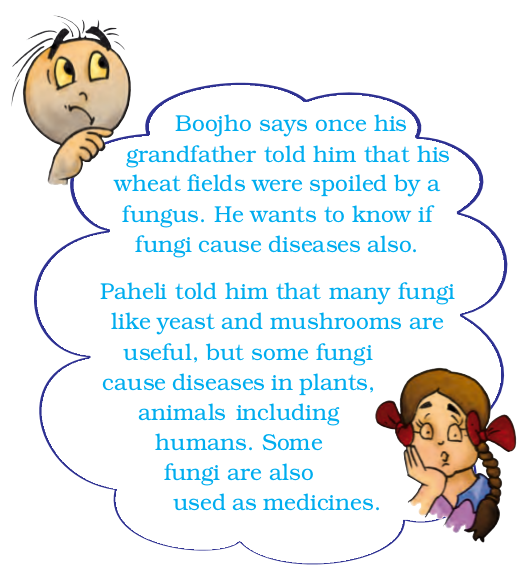
Some organisms live together and share both shelter and nutrients. This relationship is called symbiosis. For example, certain fungi live inside the roots of plants. The plants provide nutrients to the fungus and, in return, the fungus provides water and certain nutrients.
In organisms called lichens, a chlorophyll-containing partner, which is an alga, and a fungus live together. The fungus provides shelter, water and minerals to the alga and, in return, the alga prepares and provides food to the fungus.
1.5 How nutrients are replenished in the soil
Have you seen farmers spreading manure or fertilisers in the fields, or gardeners using them in lawns or in pots? Do you know why this is done?
You learnt that plants absorb minerals and nutrients from the soil. So, their amounts in the soil keep on declining. Fertilisers and manures contain nutrients such as nitrogen, potassium, phosphorous, etc. These nutrients need to be added from time to time to enrich the soil. We can grow plants and keep them healthy if we can fulfil the nutrient requirement of plants.
